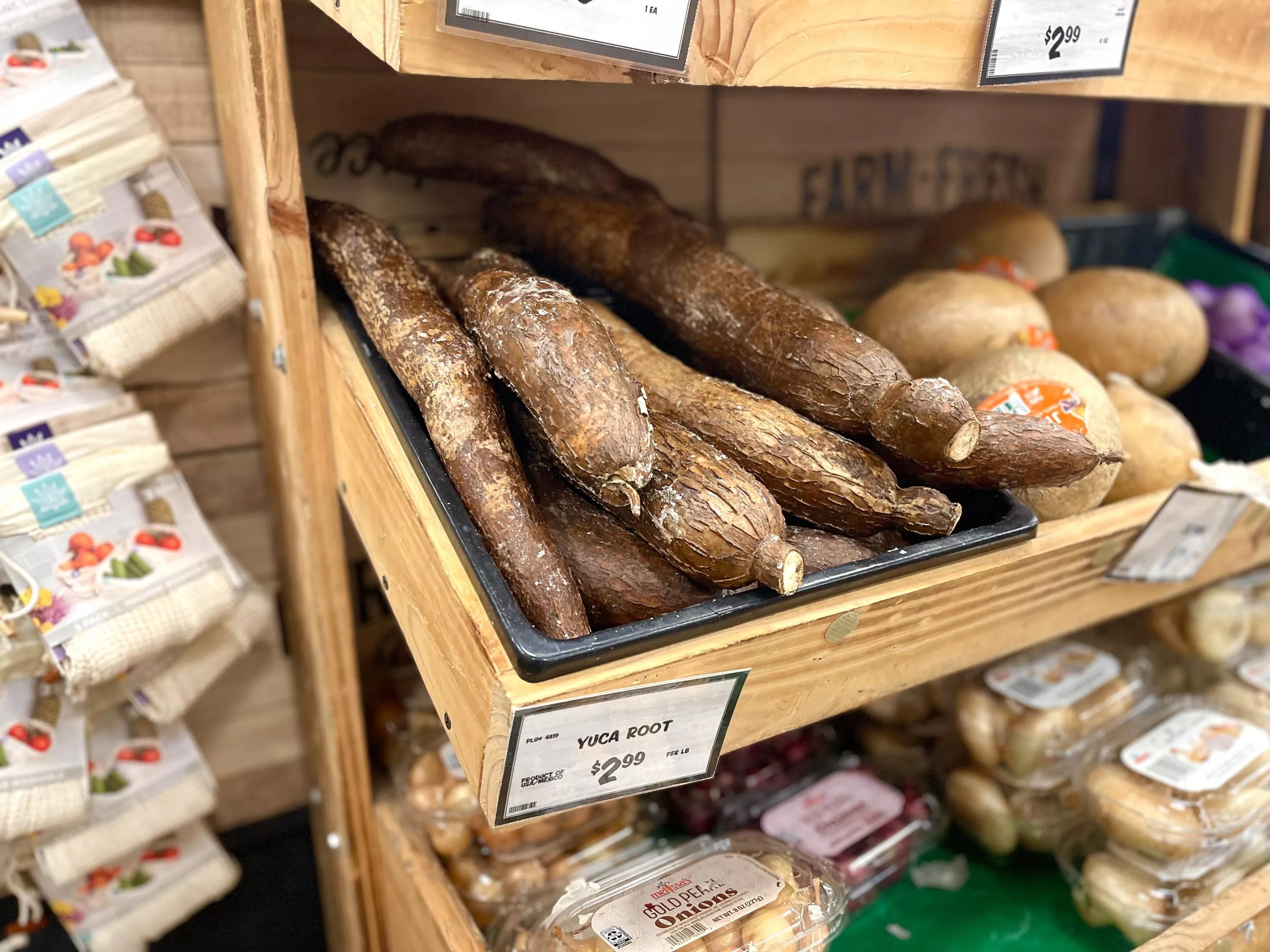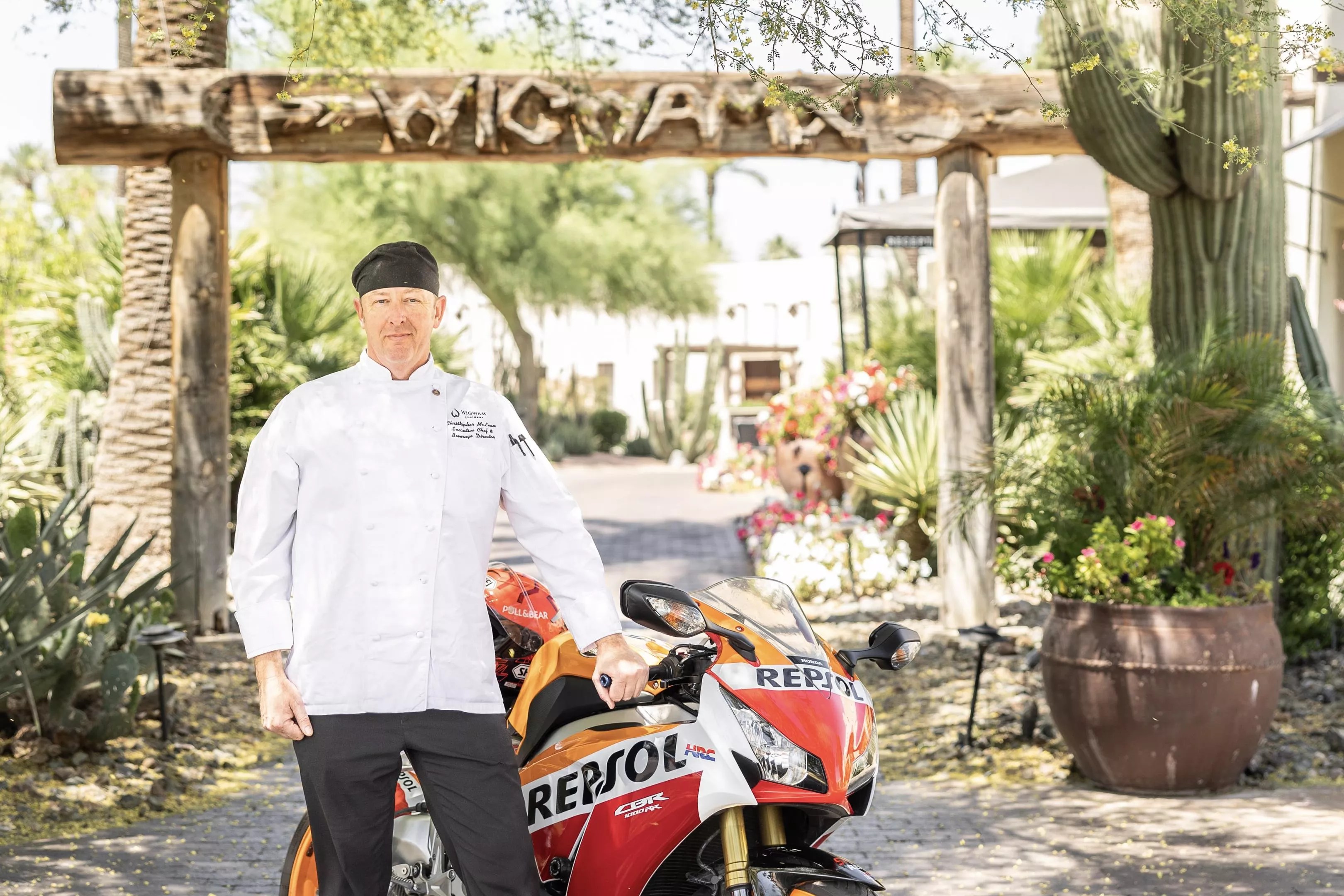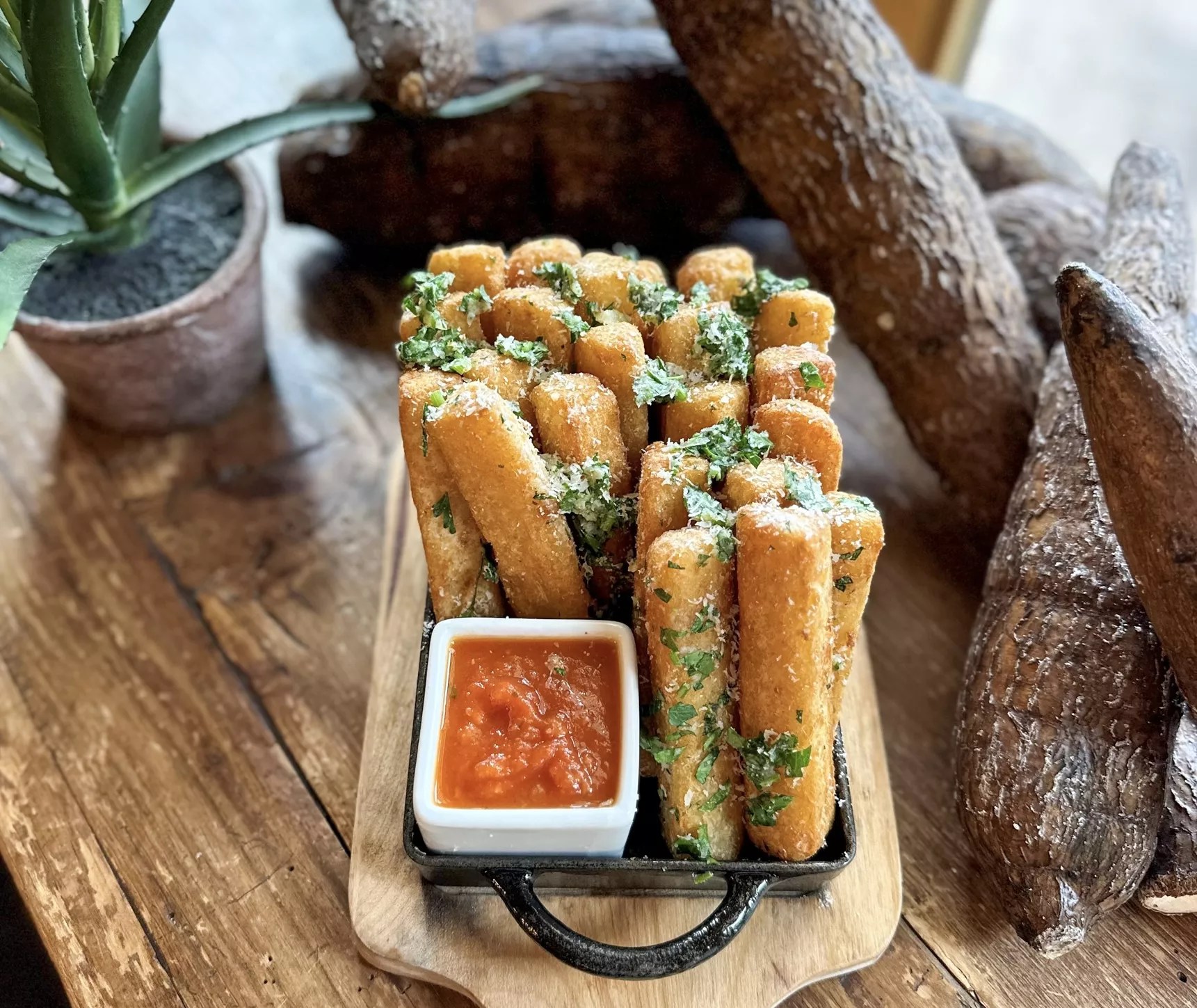
Lauren Topor

Audio By Carbonatix
Yuca root is the unsung hero of the vegetable world.
The root veggie is known by multiple names including cassava, manioc and yuca – not to be confused with yucca, the native perennial shrub with sword-shaped leaves, which also happens to be edible.
For centuries, yuca has been a staple in diets across the globe. And while it can be cultivated in Arizona – the Southwest has the soil for it – yuca is predominantly grown in South America.
These titans of the tuber world are loaded with nutrients like antioxidants, vitamins A, B and C, potassium, fiber, manganese and the good-for-your-gut stuff that keeps you feeling full, resistant starch.
Phoenix, make your New Year’s Resolution Count!
We’re $14,000 away from our End-of-Year campaign goal, with just a five days left! We’re ready to deliver — but we need the resources to do it right. If New Times matters to you, please contribute today to help us expand our current events coverage when it’s needed most.
But what does it taste like? Yuca has a flavor profile similar to the sweet potato with an earthier, nuttier smack. Also similar to potatoes, it grows underground and makes for fabulous fries.

Christopher McLean is the executive chef at The Wigwam in Litchfield Park. He learned to cook yuca in Ghana.
The Wigwam
Meet the chef championing cassava
Christopher McLean has been cooking professionally for 25 years and is currently the executive chef and beverage director at The Wigwam in Litchfield Park.
“Being a chef has taken me to some incredible places and I have had a really fun career,” McLean says.
Some of those career stops include domestic locales across Texas, ranch resorts in New Mexico, wine country destinations around California and international gigs in the Netherlands, Germany and West Africa.
“I got picked up to be the personal chef for the president of Ghana to do all of his major dinners,” McLean says.
Some of those “major dinners” included cooking for the United Nations and NATO. McLean also says he was the first sommelier to work in the country of Ghana, and the first to do a food and wine pairing in the Presidential Palace of Ghana, to boot.
Although McLean had tried yuca in the U.S. before, he only really started working with the tubers when he moved to Africa.
“It’s a dietary staple around the world and a major source of carbohydrates, especially in Ghana,” he says. “We would make something called Fufu.”
He describes the West African dish as a “big dough ball” that is put into a soup.
“Everyone sits around in a family environment and eats that dough ball and soup together,” he explains.
In addition to Fufu, McLean says that yuca root is used to make tapioca flour and notes the starchy extraction from the yuca tubers is a great thickener for things like gravies and pie fillings.
“There are so many different applications,” he says.
And, one of those applications includes McLean’s signature yuca root fries.

At Litchfield’s, the yuca root fries are dusted with parmesan and served with a side of dippable tomato jam.
The Wigwam
When life gives you yuca, make yuca fries
At Litchfield’s, the flagship restaurant at the historic Wigwam resort, McLean’s yuca root fries are listed on the menu as a signature side, sandwiched between his gouda mac and bourbon creamed corn.
Before the fries hit your table, McLean begins preparing the dish by peeling the tubers, just as you would peel a russet or sweet potato. Next McLean cuts the yuca into fry-shaped pieces and boils them until tender.
“For our application, we strain it out and completely dry it, which is a really important part of this process,” McLean says.
Ensuring the yuca pieces are completely dried before frying is essential. If there’s too much moisture, they end up as a mushy mess. Like all fries, the goal here is a crispy golden brown.
Next, the yuca pieces are deep-fried in a blended oil for about four minutes, removed and towel-dried to remove excess oil.
As a word to the wise, McLean stresses that anyone working with yuca root must be cautious in their prep routine. In its raw form, yuca contains naturally occurring forms of cyanide – yes, that cyanide.
“It’s super safe, super healthy, but you definitely do want to cook it,” he says.
At the restaurant, McLean’s yuca root fries are served with tomato jam, but he also recommends enjoying them with a dippable accouterment like an aioli or chimichurri sauce.
When asked about guests’ reactions to the signature side, McLean replied “they want to know more about where things are coming from, how you’re making it, what’s the history of using the yuca; it’s a lot of fun to be able to talk about this with our guests here at The Wigwam.”
From one French fry fan to another, yuca root fries are a crispy, golden standout you won’t want to miss.
Litchfield’s at The Wigwam
300 E. Wigwam Blvd., Litchfield Park